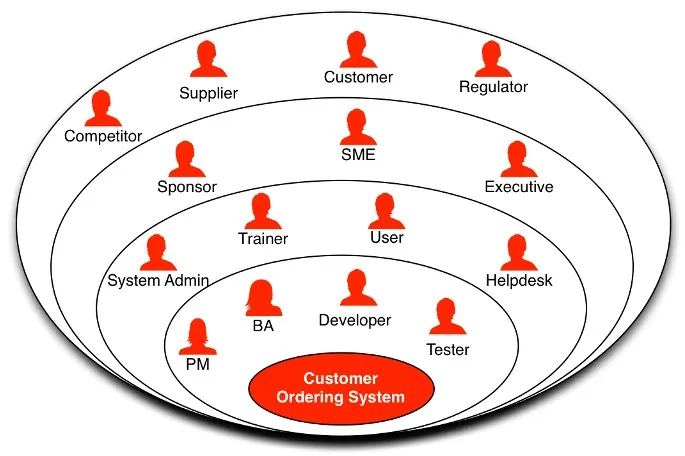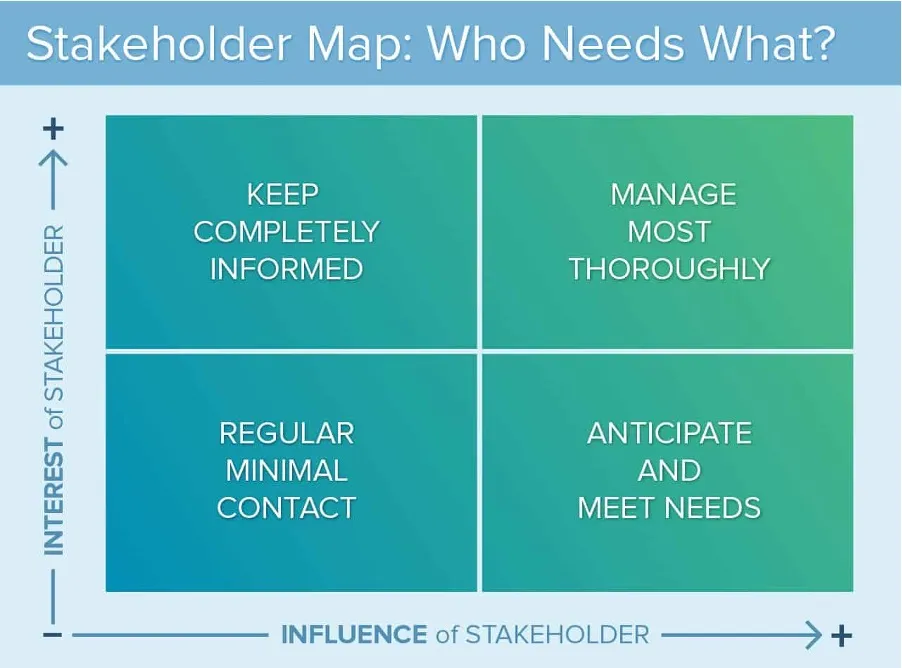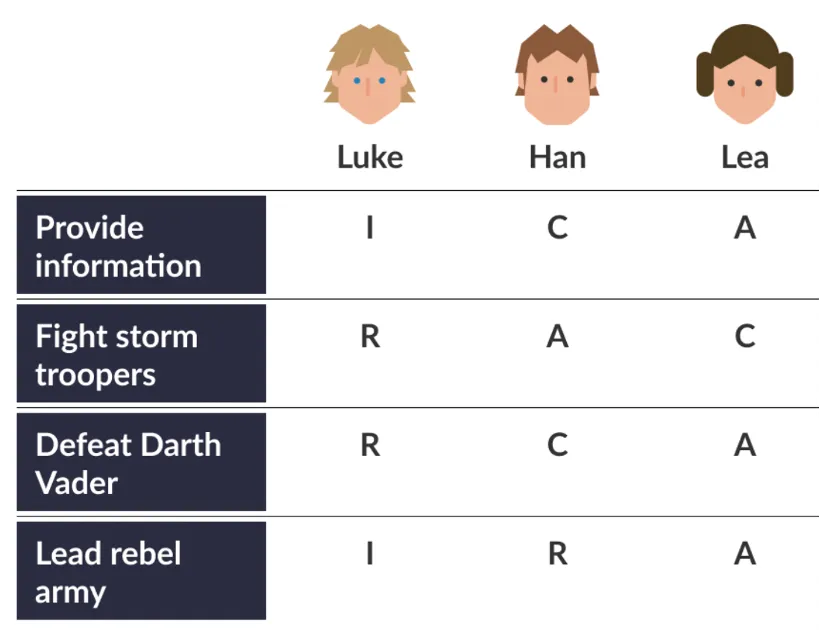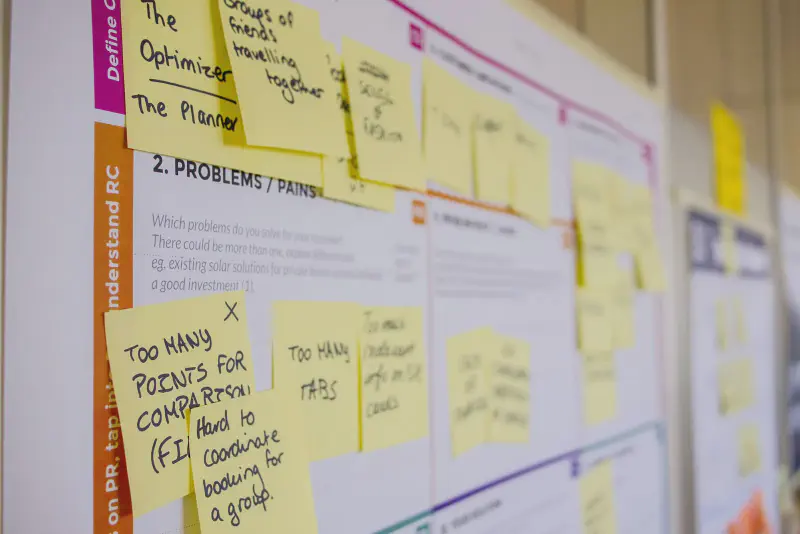Project Management for Software Engineers
Project management can sometimes feel like madness. However, with the right tools and approaches, you can navigate the chaos effectively. This guide focuses on stakeholder management, communication strategies, risk handling, and fostering collaboration—critical skills for every software engineer leading a project.
Do we need project management in the age of agile?
Nowadays it is hard to find a software team or company that does not implement some form of agile methodology weather it is Scrum or Kanban or one of the many agile flavors. And a genuine question you might have is, why we need project management skills if we have agile methodologies being implemented in our teams. The key point here is that none of the agile methodologies are project management frameworks. Rather they more or less focus on delivering working software following on from the principles laid out in the Agile Manifesto. They have very little to say about communications with and management of external stakeholders such as customers, executives and other sponsors. Nor are there a special focus on management of risks on the project. In real world very few scrum teams can be completely autonomous so there will be responsibilities distributed across multiple teams. And thus the reason for managing projects outside of the frameworks like scrum.
Managing Stakeholders
The largest part of managing an epic or project is understanding and addressing the needs of stakeholders. Here’s how to start:
-
Identify Stakeholders:
Begin by identifying all relevant stakeholders for the project. This includes anyone who will contribute to or be impacted by the project. Sometimes, this process is straightforward, but other times, you may need to dig deeper to uncover less obvious stakeholders. It’s crucial to ensure no group is overlooked, as unidentified stakeholders can later disrupt project progress. -
Group Stakeholders:
Once you have a list, categorize stakeholders into meaningful groups. Stakeholder mapping tools can help unearth relationships and interdependencies. For instance, you may group them by their influence, interest, or role in the project. This step lays the foundation for managing their needs effectively. -
Engage Effectively:
Tailor your engagement strategy to the needs of each stakeholder group. Some stakeholders might require frequent updates, while others might only need periodic reports. Knowing how to address each group ensures their concerns are managed proactively, reducing potential friction.
The Stakeholder Onion

Example Stakeholder Onion
The Stakeholder Onion framework helps you understand stakeholder involvement:
- Layer 1: Direct contributors, such as developers, designers, and QA engineers, who are integral to building the product.
- Layer 2: Individuals whose workflows change due to the solution, like support teams or operations staff.
- Layer 3: Sponsors, executives, and subject matter experts who provide guidance and approval but are less involved in day-to-day activities.
- Layer 4: External parties like customers, regulators, and suppliers, who influence the project’s broader context.
Understanding these layers clarifies how and when to engage with each group.
Stakeholder Mapping

Stakeholder Mapping Quadrant Diagram
Ask the following questions to refine your stakeholder map:
- Who has the most influence? Recognize stakeholders who can accelerate or block progress.
- Who is most affected? Prioritize those whose success depends on your project.
- What about key influencers outside the project? Identify influential individuals who may not be direct stakeholders but still impact decisions.
- Who controls resources? Pinpoint decision-makers for funding, personnel, or infrastructure.
- What are their motivations? Understanding what drives stakeholders helps you align the project goals with their interests.
The RACI Matrix

Example RACI Matrix
The RACI framework defines clear roles and responsibilities, avoiding confusion:
One of the most powerful frameworks in software project management is RACI, which brings clarity to roles and responsibilities across the team. In complex software projects where multiple stakeholders are involved, understanding who does what can mean the difference between smooth execution and chaotic confusion.
-
R - Responsible: These team members execute tasks and ensure deliverables.
RACI breaks down team member involvement into four distinct categories. The “Responsible” individuals are your doers – the developers, designers, and other team members who actively work on tasks and ensure deliverables meet specifications. They’re the ones writing the code, creating the designs, or testing the features.
-
A - Accountable: This role confirms that tasks are completed as expected.
This is different from the responsible role in that the accountable person may or may not be the actual doer. But they are ultimately responsible for making sure the task has been completed and meets the expectations of what it consists of. In scrum teams for example, the scrum team is collectively responsible for the stories on the product increment and that it meets the definition of done set by the organization. In practice if the communication happens outside the team it will be either the scrum master or the team that will end up representing the team and being responsible for the delivery of the work.
-
C - Consulted: These individuals provide input before work is performed.
The “Consulted” category includes subject matter experts and stakeholders whose input is valuable before or during task execution. These might be senior developers offering architectural guidance, security experts providing best practices, or UX specialists sharing user research insights. These for example may come in the form of centers of excellence. A few I have seen over the years are, data analytics, experimentation and security policy. Note that this is an active relationship in that the consultation should happen before the work gets done and will affect how the work gets done.
-
I - Informed: Stakeholders who need updates but don’t contribute directly.
Finally, we have the “Informed” stakeholders. These individuals need to stay in the loop but don’t directly contribute to the work. They could be executives tracking project progress, client representatives monitoring development, or team members whose work might be impacted by changes. These stakeholders are informed in a passive manner and this activity is not in the critical path.
By implementing RACI in software projects, teams can eliminate the all-too-common “too many cooks in the kitchen” problem. It creates clear lanes of responsibility, streamlines decision-making, and ensures that everyone knows exactly what’s expected of them. This clarity is particularly valuable in agile environments where roles and responsibilities might otherwise become blurred during rapid development cycles.
Communication Management
Clear communication is the backbone of any successful project. Miscommunication can lead to delays, confusion, and even project failure.
Communications Plan
At its core, a robust communication strategy in software development rests on five essential elements that work together to ensure smooth information flow.
-
Selecting the Right Method
Communication channels aren’t one-size-fits-all. Each project phase and message type demands its own approach. Technical discussions about code architecture might thrive in collaborative tools like Slack or Microsoft Teams, while major milestone updates often deserve dedicated video conferences. Daily standups work best in person or through video calls, while documentation updates can be effectively shared through project management platforms or wikis.
-
Establishing Communication Rhythm
Consistency is key in project communication. A well-defined cadence helps team members and stakeholders plan their work and expectations. This might mean daily standups for development teams, weekly progress reports for project sponsors, or monthly strategic reviews for executive stakeholders. The key is finding a rhythm that provides timely information without becoming burdensome.
-
Purposeful Communication
Every message should serve a clear purpose. Status updates should focus on progress, blockers, and next steps. Design reviews need to center on gathering specific feedback. Bug reports must contain steps to reproduce and impact assessments. When team members understand the goal of each communication type, they can provide more focused and actionable information.
-
Clear Ownership
Communication ownership prevents the “somebody else’s problem” syndrome. Whether it’s the scrum master owning sprint ceremonies, the project manager handling stakeholder updates, or developers responsible for technical documentation, clear ownership ensures nothing falls through the cracks.
-
Audience-Centric Messaging
Different stakeholders need different levels of detail. Technical teams need specifics about implementation details, while executives might only need high-level progress updates and risk assessments. Tailoring your message to your audience saves time and increases engagement.
One of the most common pitfalls in project communication is overwhelming stakeholders with too much information. Here’s how to keep communications lean and effective:
Remember, the goal isn’t to communicate more, but to communicate better. By following these principles and remaining mindful of your audience’s needs, you can create a communication plan that supports rather than hinders project progress.
Managing Risks
Risk management ensures you’re prepared for challenges and can respond effectively when they arise.
-
Identify Risks:
List all potential risks, including technical, financial, and operational threats. For instance, a risk might be a dependency on an unstable vendor or the possibility of budget overruns. A comprehensive list is the first step toward managing risks effectively. -
Classify & Prioritize:
Not all risks are equal. Classify them based on their likelihood of occurring and the severity of their impact. High-probability, high-impact risks should take precedence in your planning efforts. -
Develop Action Plans:
For each significant risk, create a plan detailing mitigation strategies. For example, if your project depends on a specific vendor, have an alternative supplier ready in case of delays. -
Monitor Continuously:
Risks evolve over time. Regularly revisit your risk register to identify new risks and reassess existing ones. This keeps your project agile and prepared. -
Respond to Threats:
When a risk materializes, act immediately using your predefined plan. This minimizes disruption and keeps the project on track. -
Foster Communication:
Encourage team members to share insights about potential risks. Transparent communication allows you to identify issues early, before they escalate.
The RAID Register
The RAID framework is a vital tool for managing risks and ensuring project success by bringing structure and clarity to potential challenges. It allows project teams to focus on four key areas: Risks, Assumptions, Issues, and Dependencies. By categorizing and tracking these elements, the RAID register provides a centralized view of project risks and dependencies, improving decision-making and enabling proactive planning.
-
Risks
represent potential threats that could disrupt the project or derail its success. These could include technical failures, missed deadlines, or budget overruns. Identifying risks early allows the team to devise mitigation strategies, such as creating contingency plans or allocating additional resources to high-risk areas.
-
Assumptions
are the factors or conditions believed to be true for the project to proceed smoothly. For example, the availability of key resources or the reliability of vendors are often significant assumptions. Documenting these assumptions ensures that all stakeholders have a shared understanding of the project’s foundational expectations and highlights areas that may require re-evaluation.
-
Issues
are the current challenges that need immediate attention. These can range from delays in securing approvals to the dreaded scope creep, where the project’s requirements expand without corresponding adjustments to time, budget, or resources. By maintaining a clear record of issues, teams can prioritize their resolution and prevent them from escalating into more significant problems.
-
Dependencies
refer to external factors that the project relies on for successful completion. These could include third-party integrations, regulatory clearances, or the timely delivery of critical components from suppliers. Tracking dependencies in the RAID register helps identify bottlenecks and plan for alternative solutions if dependencies are not met as expected.
By consolidating all these elements into a single RAID register, teams achieve better visibility into the project’s risk landscape. This centralized approach fosters proactive management, enabling teams to address potential pitfalls before they escalate. The RAID framework empowers project managers to make informed decisions, plan effectively, and keep projects on track, ultimately driving more predictable and successful outcomes.
Estimates: The Necessary Evil
Estimates are an essential part of project management, offering stakeholders a roadmap for planning and decision-making. However, they are inherently uncertain, and managing this uncertainty is key to making them effective and reliable. But refusing to make estimates does not solve any problems. It is just refusing to be accountable. Any organization runs on plans and roadmaps and people depend on those to guide their work and plan for their future work.
Start by understanding your team’s cadence, which involves learning how your team works, their delivery patterns, and leveraging historical data. This understanding helps you create more accurate and realistic predictions about timelines and workloads. Complement this with visualization tools like Mermaid or draw.io, which can illustrate project timelines, dependencies, and potential bottlenecks, making it easier to communicate the big picture to stakeholders.
When circumstances change, it’s critical to communicate changes proactively. Updating estimates and informing stakeholders early prevents misunderstandings and helps them adjust their plans accordingly. Finally, treat estimates as an accountability tool. Stakeholders rely on your timelines to plan their activities, so handle this responsibility with care, always striving for transparency and accuracy.
By following these principles, you can create estimates that are both dependable and adaptable, setting the stage for project success.
Summary
Project management for software engineers goes beyond the scope of agile methodologies, addressing essential areas like stakeholder management, communication, risk mitigation, and collaboration. While agile frameworks focus on delivering working software, project management ensures effective coordination with external stakeholders, proactive risk handling, and clarity in roles and responsibilities.
This guide emphasizes the importance of identifying and engaging stakeholders using tools like the Stakeholder Onion and the RACI matrix, enabling clear accountability. Communication is highlighted as a cornerstone for success, with practical tips on creating a communication plan tailored to audience needs. Risk management is demystified through the RAID framework, ensuring transparency and preparedness for potential challenges.
Additionally, the post underscores the value of reliable estimates and their role in guiding stakeholders, as well as fostering a culture of delegation and teamwork. By mastering these elements, software engineers can effectively navigate the complexities of project management, ensuring aligned goals, clear communication, and successful outcomes in an ever-evolving landscape.
